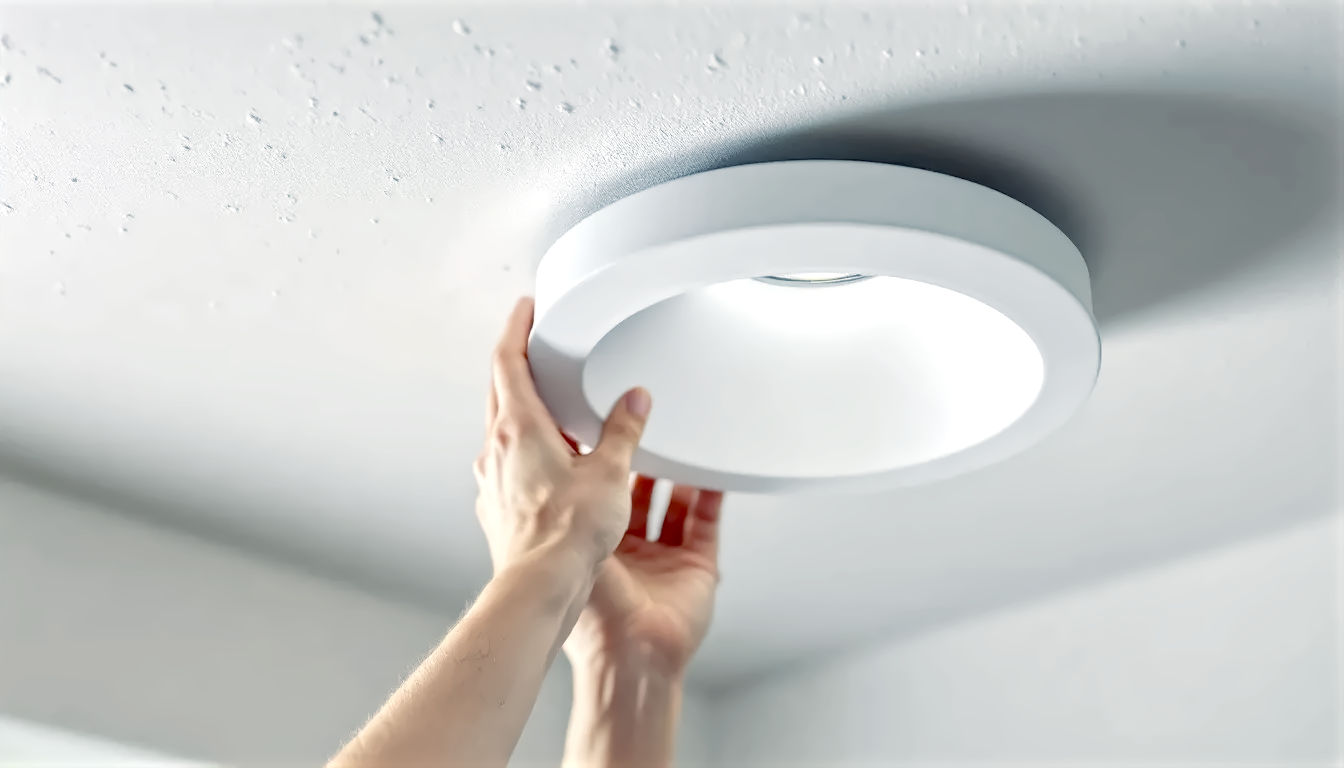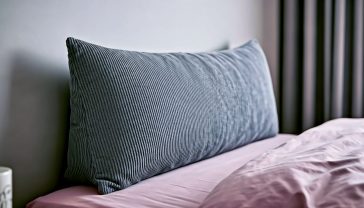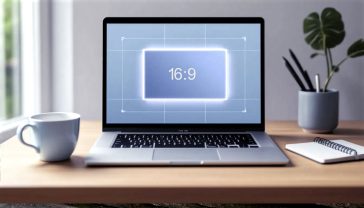What are IP20-Rated Materials? Your Ultimate Guide to Indoor Protection
Confused by IP20? This guide breaks down what this common electrical safety rating means for UK homes. Learn where it’s safe to use and where it’s not.

This post may contain affiliate links. If you make a purchase through these links, we may earn a commission at no additional cost to you.
Ever glanced at a new light fitting or a socket and spotted a little code like ‘IP20’? It looks a bit like a secret agent’s codename, doesn’t it? You might have shrugged it off, thinking it’s just technical jargon for the electricians. But what if I told you that little code is actually a super important bit of information that tells you exactly where that item is safe to use in your home?
Think of it like the star rating on a hotel. You wouldn’t book a one-star hotel expecting five-star luxury, would you? In the same way, you wouldn’t want to put an electrical item designed for a dry, cosy living room into a steamy bathroom. That’s where IP ratings come in. They’re a simple, universal system that tells you how well-protected an electrical enclosure is against things like dust, fingers, and water.
And IP20 is one of the most common ratings you’ll find on indoor electricals here in the UK. It’s the bread and butter of the electrical world, the trusty workhorse you’ll find everywhere from your bedside lamp to the ceiling lights in your kitchen. But what does it actually mean? Why isn’t it suitable for outdoors? And how do you know if it’s the right choice for your project?
Don’t worry, you’re in the right place. We’re about to demystify this common but often misunderstood rating. Think of this as your complete guide to everything IP20. We’ll break down the numbers, explore where you can and can’t use these materials, and give you the confidence to know you’re making safe and sensible choices for your home. By the end, you’ll be able to spot an IP rating from a mile off and know exactly what it’s telling you. Let’s get started.
What on Earth is an IP Rating?
Before we dive headfirst into the world of IP20, let’s get our heads around the basics. What exactly is an IP rating?
The letters ‘IP’ stand for Ingress Protection. ‘Ingress’ is just a fancy word for something getting inside something else. So, an IP rating tells you how good an electrical enclosure—like the casing around a light bulb or a plug socket—is at stopping things from getting inside it.
These ‘things’ are split into two categories:
- Solids: This includes everything from tiny specks of dust to tools, wires, and, most importantly, your fingers.
- Liquids: This is almost always about protection against water, whether it’s a light splash, a powerful jet, or being completely dunked underwater.
The IP rating is usually followed by two numbers. Each number tells you a different story.
- The first number tells you how well it’s protected against solids. This scale goes from 0 (no protection at all) up to 6 (completely dust-tight).
- The second number tells you how well it’s protected against liquids. This scale goes from 0 (no protection) up to 9 (protected against high-pressure, high-temperature water jets).
The IP (Ingress Protection) rating system is quite extensive and is used to specify the degree of protection an enclosure offers against external factors like solids and liquids. The rating typically consists of the letters “IP” followed by two digits.
Here’s a breakdown of what those digits represent:
First Digit: Protection against Solid Objects or Materials
- 0: No protection.
- 1: Protected against solid objects over 50 mm (e.g., hands).
- 2: Protected against solid objects over 12.5 mm (e.g., fingers).
- 3: Protected against solid objects over 2.5 mm (e.g., tools).
- 4: Protected against solid objects over 1.0 mm (e.g., wires).
- 5: Dust-protected; limited ingress of dust permitted (no harmful deposit).
- 6: Dust-tight; no ingress of dust.
Second Digit: Protection against Liquids
- 0: No protection.
- 1: Protected against vertically falling drops of water (e.g., condensation).
- 2: Protected against vertically falling drops of water when the enclosure is tilted up to 15 degrees.
- 3: Protected against spraying water when tilted up to 60 degrees.
- 4: Protected against splashing water from any direction.
- 5: Protected against low-pressure jets of water from any direction.
- 6: Protected against high-pressure jets of water from any direction.
- 7: Protected against immersion in water up to 1 meter for up to 30 minutes.
- 8: Protected against prolonged immersion in water under more severe conditions (specified by the manufacturer, often deeper than 1 meter).
- 9K: Protected against high-pressure, high-temperature water jets, and steam cleaning (specific to road vehicles).
Examples
Here are some common combinations of IP20 ratings along with example products or materials for each:
- IP00: No protection against solids or liquids.
Example: Open electrical components in a controlled environment. - IP10: Protected against solid objects over 50 mm, no liquid protection.
Example: Large ventilation grilles. - IP20: Protected against solid objects over 12.5 mm, no liquid protection.
Example: Home appliances like toasters or desktop computers. - IP30: Protected against solid objects over 2.5 mm, no liquid protection.
Example: Tools with non-conductive handles. - IP40: Protected against solid objects over 1.0 mm, no liquid protection.
Example: Most wired telephones or indoor lighting fixtures. - IP50: Dust-protected, no liquid protection.
Example: Control cabinets for indoor industrial use. - IP60: Dust-tight, no liquid protection.
Example: Dust-sensitive laboratory equipment. - IP01: No solid protection, protected against vertically falling water drops.
Example: Basic indoor ceiling fixtures. - IP11: Protected against objects over 50 mm and vertically falling water drops.
Example: Simple outdoor lighting fixtures. - IP21: Protected against objects over 12.5 mm and vertically falling water drops.
Example: Some home appliances like washing machines. - IP31: Protected against objects over 2.5 mm and vertically falling water drops.
Example: Some power tools for light outdoor use. - IP41: Protected against objects over 1.0 mm and vertically falling water drops.
Example: Indoor security cameras. - IP51: Dust-protected and protected against vertically falling water drops.
Example: Partially enclosed outdoor electrical panels. - IP61: Dust-tight and protected against vertically falling water drops.
Example: Precision instruments with minimal water exposure. - IP02 to IP62: Similar to IP01 to IP61, but with protection against water drops up to 15° tilt.
Examples range from basic outdoor equipment to more specialized instruments. - IP03 to IP63: Protection against spraying water up to 60°.
Examples include outdoor electrical sockets and weather-resistant cameras. - IP04 to IP64: Protection against splashing water from any direction.
Examples include outdoor lighting and some smartphones. - IP05 to IP65: Protection against low-pressure water jets.
Examples include garden hoses and outdoor security systems. - IP06 to IP66: Protection against high-pressure water jets.
Examples include marine equipment and industrial washdown areas. - IP07 to IP67: Protection against water immersion up to 1 meter for 30 minutes.
Examples include waterproof watches and some rugged smartphones. - IP08 to IP68: Protection against prolonged water immersion beyond 1 meter.
Examples include deep-water cameras and submarine equipment. - IP09K to IP69K: Protection against high-pressure, high-temperature water jets.
Examples include equipment for food processing plants and car wash systems.
Note that some combinations (like IP09 to IP69) are not typically used, as it’s unusual to have extreme water protection without corresponding solid protection.
Note that some IP ratings may also include additional letters to indicate other forms of protection, such as resistance to mechanical impacts, but the basic IP ratings focus on solids and liquids.
So, when you see an IP rating, you’re getting a quick, at-a-glance summary of its durability against everyday hazards. It’s a standardised system, meaning an IP44 light sold in a DIY shop in Cardiff has the exact same level of protection as one sold in Glasgow. This system was created by the International Electrotechnical Commission (IEC), a global body that sets standards for all sorts of electronics, so it’s a mark of quality you can trust.
Cracking the Code: Let’s Break Down IP20
Now that we know how the system works, let’s apply it to our star player: IP20.
- The first digit is 2. Looking at the solids protection scale, a ‘2’ means the item is protected against solid objects that are larger than 12.5mm.
- The second digit is 0. On the liquids protection scale, a ‘0’ means it has no protection against water whatsoever.
So, what does that mean in the real world?
The ‘2’ for solids protection is essentially about preventing accidental contact with dangerous parts inside. The 12.5mm measurement is no random number; it’s roughly the size of an adult finger. This means an IP20-rated product is designed so you can’t accidentally poke a finger inside and touch a live electrical component. This is a fundamental safety feature for any electrical item you might interact with in your home. It also stops larger objects, like a stray screwdriver, from getting inside. However, it won’t stop smaller things like wires, smaller tools, or determined creepy crawlies.
The ‘0’ for water protection is just as important. It’s a clear warning: this product and water are not friends. It has no seals or special design features to stop moisture from getting in. A single splash, a bit of condensation, or even just being in a very damp room could be enough to cause a short circuit, damage the product, or, in the worst-case scenario, create a serious safety risk.
In a nutshell, an IP20 rating means: “Safe from fingers, but keep it dry.” It’s a basic level of protection that’s perfectly fine for most dry, indoor environments, but completely unsuitable for anywhere with a hint of moisture.
Where You’ll Find IP20: The Natural Habitat of a Common Rating
Because IP20 offers solid, basic protection for dry areas, it’s one of the most common ratings you’ll encounter for everyday indoor electricals in the UK. It hits the sweet spot between safety and cost. Providing high-level water protection costs more, and for many products, it’s simply not needed.
So, where can you confidently use IP20-rated products? Think of the driest, safest parts of your home.
Living Rooms, Bedrooms, and Hallways
These are the prime locations for IP20 products. Your ceiling lights, wall sconces, pendant lamps, and the downlights in your living room or bedroom almost certainly have an IP20 rating. The same goes for your light switches and plug sockets.
In these rooms, there’s virtually no risk of water getting anywhere near the electrics. The main danger is someone accidentally touching a live part, and the IP20 rating has that covered. You don’t need to worry about splashes or steam, so there’s no need to pay extra for a higher-rated, water-resistant product.
Studies and Home Offices
Your home office is another IP20 haven. Your desk lamp, the power strip for your computer, and the sockets on the wall are all designed for a dry environment. As long as you’re careful with your morning cuppa, IP20 is perfectly sufficient for keeping your workspace safe and functional.
Dry Kitchen Areas
Now, kitchens can be a bit tricky, as they have both wet and dry zones. An IP20 rating is absolutely fine for general lighting that’s well away from the sink. For example:
- Ceiling spotlights over the main part of the room.
- Pendant lights hanging over a kitchen island or dining table.
- Under-cabinet lights, as long as they aren’t directly over a kettle or the sink where steam and splashes are common.
However, once you get closer to the taps, the rules change. We’ll cover the ‘no-go’ zones for IP20 in just a moment.
Inside Cupboards and Wardrobes
Those little LED strip lights that make your wardrobe feel fancy? Or the light that comes on when you open your pantry? These are classic examples of where IP20 is the perfect choice. They’re enclosed, dry, and only need protection from accidental knocks or curious fingers.
Commercial and Retail Spaces
It’s not just our homes where IP20 is common. Step into any high-street shop, office, or school, and you’ll be surrounded by IP20-rated fittings. The fluorescent tube lights in an office, the spotlights highlighting a display in a shop, and the general lighting in a corridor are all typically IP20. Just like in our homes, these are controlled, dry environments where basic protection is all that’s needed.
Essentially, if an area is dry, temperature-controlled, and isn’t likely to have jets of water or clouds of dust, IP20 is usually the go-to standard. It provides the essential safety we need for everyday life without the unnecessary cost of features designed for harsher environments.
The No-Go Zones: Where You Should NEVER Use IP20
Understanding where not to use IP20 is even more important than knowing where you can. Using an electrical product with the wrong IP rating for its environment isn’t just a bad idea—it’s dangerous. It can lead to electric shocks, fires, and damaged appliances.
Here are the absolute no-go areas for anything rated IP20.
Bathrooms: The Ultimate Danger Zone
The bathroom is public enemy number one for IP20 products. The combination of water, steam, and electricity is a potentially lethal mix, which is why UK wiring regulations (known as BS 7671) are extremely strict about what goes where.
Bathrooms are divided into different zones, based on how likely they are to get wet.
- Zone 0: This is inside the bath or shower itself. Any fitting used here must be low voltage and have a minimum rating of IP67, meaning it’s totally immersion-proof.
- Zone 1: This is the area directly above the bath or shower, up to a height of 2.25 metres from the floor. Fittings here need a minimum of IP44, but IP65 (jet-proof) is often recommended.
- Zone 2: This is the area stretching 0.6 metres outside the perimeter of the bath and to a height of 2.25 metres from the floor. It also includes the area around the sink. The minimum rating required here is IP44.
As you can see, IP20 doesn’t make the cut for any of these zones. Its complete lack of water protection makes it a serious hazard. Even outside these defined zones, in a part of the bathroom that’s unlikely to get a direct splash, the high levels of condensation and steam can easily get inside an IP20 fitting and cause a fault.
The rule is simple: IP20 products have no place in a bathroom. Period.
Kitchen Sink Areas
While some parts of the kitchen are fine for IP20, the area immediately around the sink is another danger zone. Think about it: you’re washing up, and water splashes everywhere. You’re filling the kettle, and steam is billowing out.
Any light fittings or sockets close to the sink need a higher level of water protection. For example, spotlights directly above a sink should ideally be IP44 or even IP65 to be safe. Sockets should be positioned a safe distance away from the taps—at least 30cm is the rule of thumb. While most standard UK sockets are IP20, their placement is key to safety.
Outdoors: The Great Unpredictable
This one might seem obvious, but it’s worth saying loud and clear: never use IP20-rated products outside.
The British weather is famously unpredictable. Even on a lovely sunny day, a sudden downpour can appear out of nowhere. An IP20 light fitting on your patio or in your garden would be ruined in seconds. Rain, morning dew, and even just damp air can get inside and cause a dangerous failure.
All outdoor electrical equipment needs to be specifically designed to withstand the elements. For garden lights, you should be looking for a minimum of IP44 (splash-proof) for wall lights in a sheltered porch, and IP65 (jet-proof) or IP67 (immersion-proof) for things like ground lights or pond lights that will be exposed to heavy rain and puddles.
Garages, Workshops, and Basements
These areas can be deceptive. You might think of your garage as an ‘indoor’ space, but it’s often much more challenging than a living room.
- Damp: Many garages and basements in the UK are prone to damp and condensation, especially during the colder months. This moisture can be just as damaging as a direct splash of water over time.
- Dust: If you do a lot of woodwork or other DIY projects in your workshop, you’ll generate a lot of dust. An IP20 fitting only protects against objects larger than 12.5mm, so fine sawdust can easily get inside, build up, and create a fire hazard.
For these reasons, it’s often wiser to choose fittings with a higher IP rating for these spaces. Something like IP44 would offer protection from splashes and larger dust particles, while IP65 would be a robust choice for a really dusty workshop, as it’s completely dust-tight and can be hosed down for cleaning.
Choosing the right IP rating is all about matching the product to the environment. IP20 is a fantastic, safe, and cost-effective choice for the majority of our homes. But stepping into a wet, damp, or dusty zone requires an upgrade to ensure everything stays safe and works as it should.
IP20 vs. The World: How Does It Compare to Other Ratings?
To really understand the strengths and weaknesses of IP20, it’s helpful to see how it stacks up against other common IP ratings you might come across in the UK. Think of it like a game of Top Trumps for electricals.
IP20 vs. IP44: The Indoor/Outdoor Divide
This is probably the most common comparison you’ll need to make when shopping for fittings.
- IP20: Protected against fingers (solids >12.5mm). No water protection.
- IP44: Protected against small solids (>1mm, like wires or screws). Protected against splashes of water from any direction.
The difference here is night and day. That jump from ‘0’ to ‘4’ on the water protection scale is huge. IP44 is your go-to rating for bathrooms (in Zone 2) and for sheltered outdoor lights, like a porch light that’s protected from direct rain. The higher solids rating also means it’s better at keeping out small insects and bits of debris.
When to choose IP44 over IP20:
- In a bathroom (Zone 2).
- For a light fitting in a sheltered outdoor area.
- In a utility room or garage that might get damp.
IP20 vs. IP65: The Dust and Jet-Proof Champion
This is a significant step up in protection.
- IP20: Protected against fingers. No water protection.
- IP65: Completely dust-tight. Protected against low-pressure jets of water from any direction.
An IP65 rating means the product is seriously robust. The ‘6’ for solids means no dust can get in at all, making it ideal for dusty workshops or industrial settings. The ‘5’ for water means you could safely hose it down to clean it. This is why IP65 is a popular choice for outdoor lights that are exposed to the elements, and for downlights in the area directly above your shower (Zone 1 in the bathroom).
When to choose IP65 over IP20:
- For outdoor garden lighting.
- In a very dusty environment like a workshop.
- In bathroom Zone 1 (directly above a shower or bath).
- Anywhere that might need to be cleaned with a hose or pressure washer.
IP20 vs. IP67/IP68: The Submersible Superstars
These are the top dogs of water protection.
- IP20: Protected against fingers. No water protection.
- IP67: Completely dust-tight. Protected against temporary immersion in water (up to 1 metre for 30 minutes).
- IP68: Completely dust-tight. Protected against continuous immersion in water under conditions specified by the manufacturer.
You’ll find IP67 and IP68 ratings on products designed to live in water. Think of the lights inside a swimming pool or a pond pump. They are also used for underground electrical joints and in environments that might experience flooding. For most homeowners, you’ll rarely need a rating this high, but it shows the sheer range of protection the IP system covers.
When to choose IP67/68 over IP20:
- For fittings that will be placed underwater (e.g., pond or pool lights).
- For drive-over ground lights that may sit in puddles for long periods.
- In environments with a high risk of flooding.
This comparison makes it clear that IP20, while common, is very much a specialist for one type of environment: the dry and safe indoors. It’s like having a comfortable pair of slippers. They’re perfect for walking around the house, but you wouldn’t wear them to climb a mountain or go for a swim. Every rating has its purpose, and choosing the right one is key to a safe and long-lasting installation.
The Future of IP Ratings and Indoor Electrics
The world of electrics and home design is always moving forward. So, what does the future hold for our humble IP20 rating and the way we light and power our homes?
The Rise of LED Technology
One of the biggest changes in recent years has been the complete takeover of LED lighting. LEDs are more energy-efficient, last much longer, and are far more versatile than the old incandescent or halogen bulbs. This has had an interesting effect on IP ratings.
Because LED fittings are often sealed units (you don’t change the bulb, you replace the whole fitting), manufacturers can design them with much higher IP ratings more easily and cheaply than before. An integrated LED downlight can be made completely dust-tight (IP6X) without much extra effort.
This means we’re starting to see a trend where higher-rated products are becoming more common and affordable. While your living room ceiling light might not need to be IP44, you might find that the stylish new LED fitting you like the look of comes with that rating as standard. This is great news for consumers, as it means we’re often getting a more durable and robust product for our money.
Smart Homes and Connected Devices
The smart home revolution is also changing the game. We now have light bulbs, sockets, and switches that are connected to the internet and controlled by our phones or voice assistants. These devices contain delicate electronics—microchips, Wi-Fi receivers, and sensors—that are even more sensitive to dust and moisture than a simple old switch.
Because of this, you might see smart home devices designed for general indoor use coming with slightly higher IP ratings, just to give those sensitive components an extra layer of protection against the dust that inevitably gathers behind the TV or under the sofa. While IP20 is still the baseline, don’t be surprised to see more IP3X or IP4X ratings on smart gadgets, even if they have no water protection.
A Greater Focus on Safety and Regulations
Home safety standards are constantly being reviewed and improved. While the UK’s wiring regulations are already among the strictest in the world, there’s always a push to make things even safer. We might see future updates to the regulations that demand higher minimum IP ratings in certain areas.
For example, as open-plan living becomes more popular, the lines between the kitchen and living areas are blurring. This could lead to clearer rules about what IP ratings are required in the ‘splash-adjacent’ zones of these large, multi-use spaces.
However, despite all these changes, the fundamental role of IP20 is unlikely to disappear. For a simple, affordable, and safe electrical fitting in a standard dry room, it remains the perfect tool for the job. It provides the essential finger-safe protection that the law requires, without the added cost of waterproofing that simply isn’t needed.
The IP rating system itself is a brilliant piece of practical design: simple, universal, and easy to understand. It has served us well for decades and will continue to be the language we use to talk about electrical safety for many years to come. And now, you’re fluent in it. You can confidently walk into any DIY store, look at a light fitting, and know in an instant whether it’s a tough, all-weather hero or a comfortable, indoor-only slipper. And that’s a pretty powerful bit of knowledge to have.
Further Reading
For those who wish to delve deeper into the technical standards and regulations surrounding IP ratings and electrical safety in the UK, these resources are highly recommended:
- Electrical Safety First: A leading UK charity dedicated to reducing deaths and injuries caused by electricity in the home. Their website offers a wealth of easy-to-understand guides on home electrical safety.
- The IET (Institution of Engineering and Technology): As co-publishers of the BS 7671 Wiring Regulations, the IET is a definitive source for professional standards. Their site contains detailed information for both electricians and the public.
- BSI (British Standards Institution): The UK’s national standards body. You can search for and purchase the official BS EN 60529 standard, which is the British adoption of the international standard for IP ratings.






